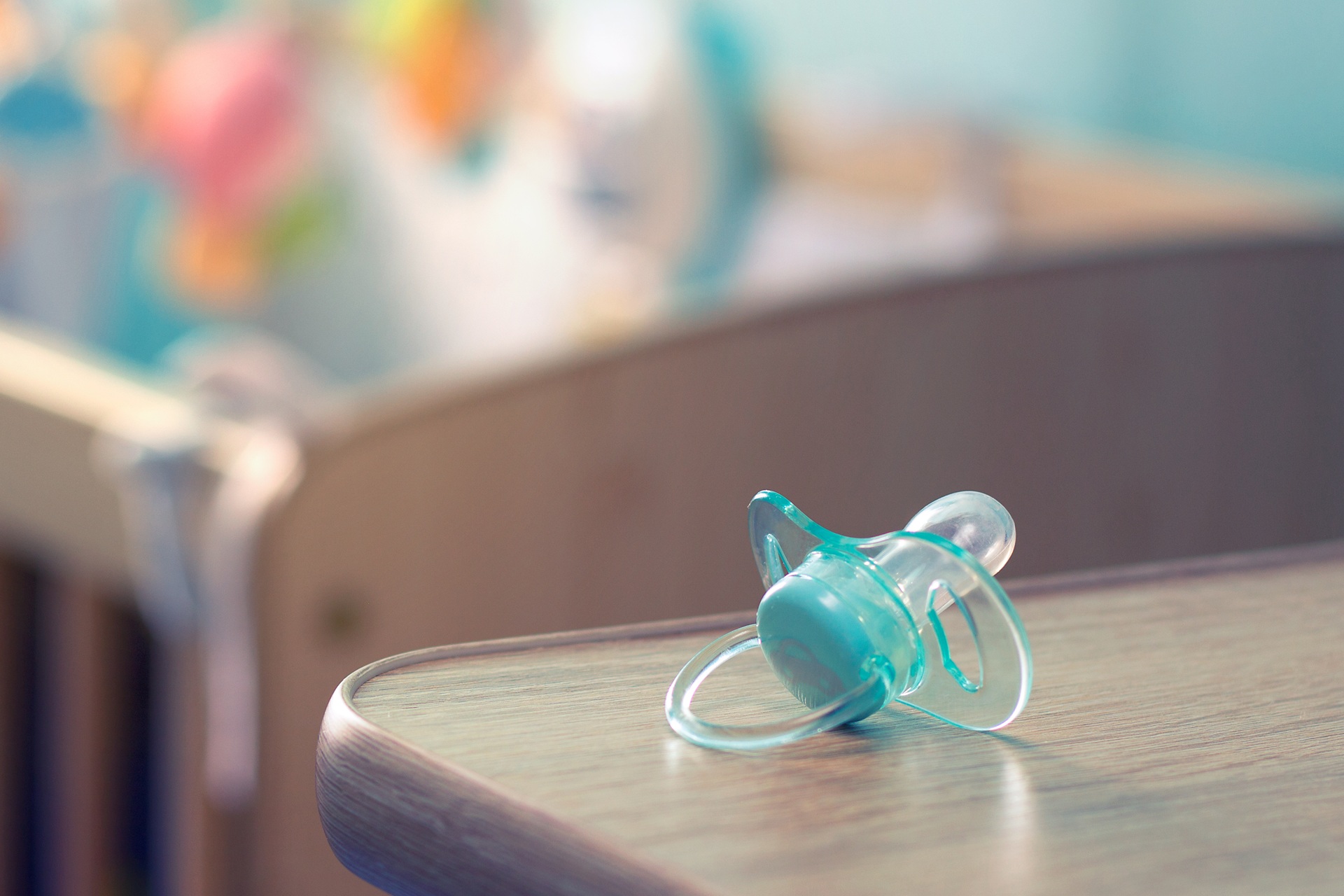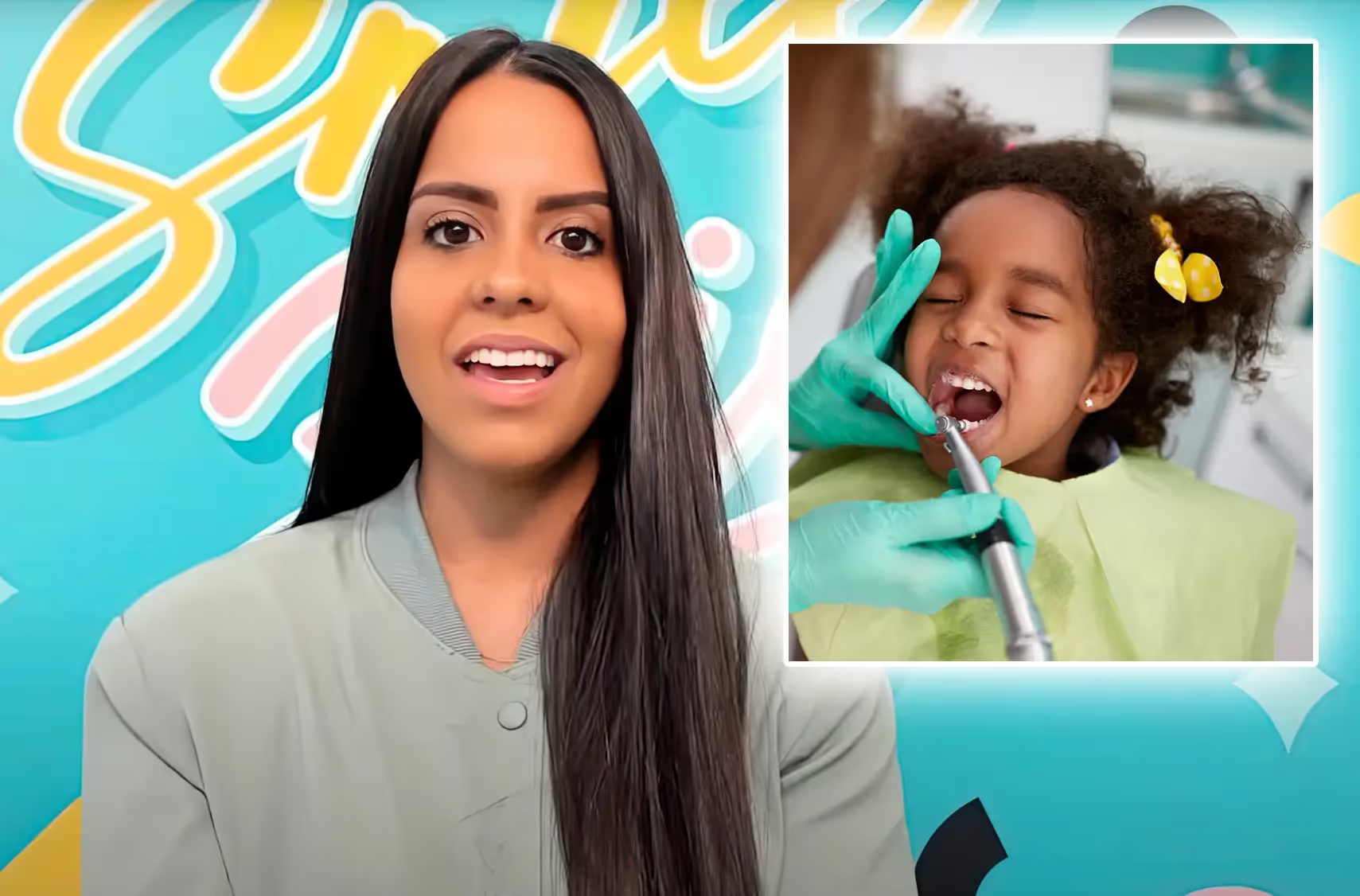
Babies start sucking their thumbs before birth—it’s a natural reflex that helps with feeding and soothing. Pacifiers and thumb sucking are normal early on, but timing matters for healthy teeth and jaws.
Pacifiers: Helpful but Temporary
Pacifiers can comfort babies and may even reduce the risk of SIDS during sleep. If breastfeeding, wait until feeding is well established (about 3–4 weeks) before introducing one.
The American Academy of Pediatric Dentistry (AAPD) notes that pacifier use should ideally end by age 3 to avoid problems like open bites, crooked teeth, or changes in jaw growth.
At our practice, we recommend beginning to wean around the first birthday. By age 1, babies are ready to focus more on chewing foods, making new sounds, and moving away from the suck-swallow reflex. This earlier transition supports jaw growth, oral function, and speech development.
The Frida Pacifier Weaning System—developed by a pediatric dentist—offers a step-by-step way to gently help toddlers give up the pacifier.
Thumb Sucking: Natural but Watch the Timing
Most children stop thumb sucking between ages 2–4. The AAPD cautions that if the habit continues beyond age 4—especially if it’s frequent or forceful—it can affect how the teeth and jaws develop.
In our practice, we encourage families to aim for thumb sucking to be finished by around age 3. This is case by case—some children transition earlier, and others may need a little more time. However, prolonged thumb sucking can sometimes be a sign of oral motor dysfunction. In those cases, we want to involve an orofacial myofunctional therapist (OMT) early to support healthy oral function and stop the habit before it affects bite, jaw growth, or speech.
Extended thumb or pacifier use can also cause the front teeth to flare forward. Not only does this change the bite, but it also makes teeth more vulnerable to injury if a child falls or has an accident.
Encouraging Chewing Around 6 Months
When solids begin (around 6 months), chewing takes on a much bigger role in oral development. It’s important to encourage chewing early, not just for nutrition, but to support healthy oral function.
- Teething toys and baby-led weaning help babies explore chewing safely.
- The Myomunchee is a dentist-designed chewing device that strengthens the jaw, improves tongue coordination, and encourages correct swallowing patterns.
- Dr. Milca loves the Myomunchee for its early-life benefits. It can be introduced around 6 months, alongside solids, to support chewing, swallowing, and speech development. Unlike pacifiers, the Myomunchee is not a habit to “wean” from—it’s a positive tool for oral development that can continue to be used as children grow.
- Chewing with tools like the Myomunchee supports airway health, facial growth, and naturally helps move kids away from sucking habits.
When to Get Extra Help
Sometimes, if habits linger well beyond what’s expected, it can signal oral motor dysfunction. That’s when an evaluation by an orofacial myofunctional therapist (OMT) may help.
Trusted colleagues we refer to include:
- Well Beyond Pediatric Therapy
- OMT of York
- Valley OMT
- Berks MyoSpot
Helping Kids Let Go
- Aim for: pacifier gone by age 1 (practice recommendation); thumb sucking gone by around age 3, though this may vary case by case.
- Stay positive: lots of praise for small steps.
- Notice patterns: if sucking happens when a child is tired or anxious, offer other comforts like extra snuggles or quiet time.
- Consider tools: The Frida Weaning System (for pacifiers) and the Myomunchee (for chewing and oral development, starting at ~6 months) can smooth the transition.
Safety First
- Replace worn pacifiers and keep them clean.
- Never dip them in sweeteners or tie them around the neck.
Every Child Is Different
Some let go quickly, others take longer—and that’s okay. What matters most is patience, positivity, and supporting natural oral development.
We’re always here to help guide your family and connect you with the right resources if extra support is needed.

recent posts
%20(1).webp)
Tooth Talk: Keep Your Teeth Happy This Fall!
Fall is here — crunchy leaves, cozy sweaters, and plenty of tasty snacks. But did you know some autumn favorites can be tougher on your teeth than others? The good news: you don’t have to skip the treats. With a few smart choices, straight from AAPD-approved guidelines, you can enjoy the season and keep your smile shining.
.webp)
Back-to-School Smiles: Tips to Keep Your Child’s Breath Fresh and Mouth Healthy
A healthy mouth isn’t just about fresh breath—it helps children feel confident, stay focused, and avoid unnecessary toothaches or distractions in class. By encouraging these simple daily habits, you’re setting your child up for a bright smile and a healthy, happy school year.




